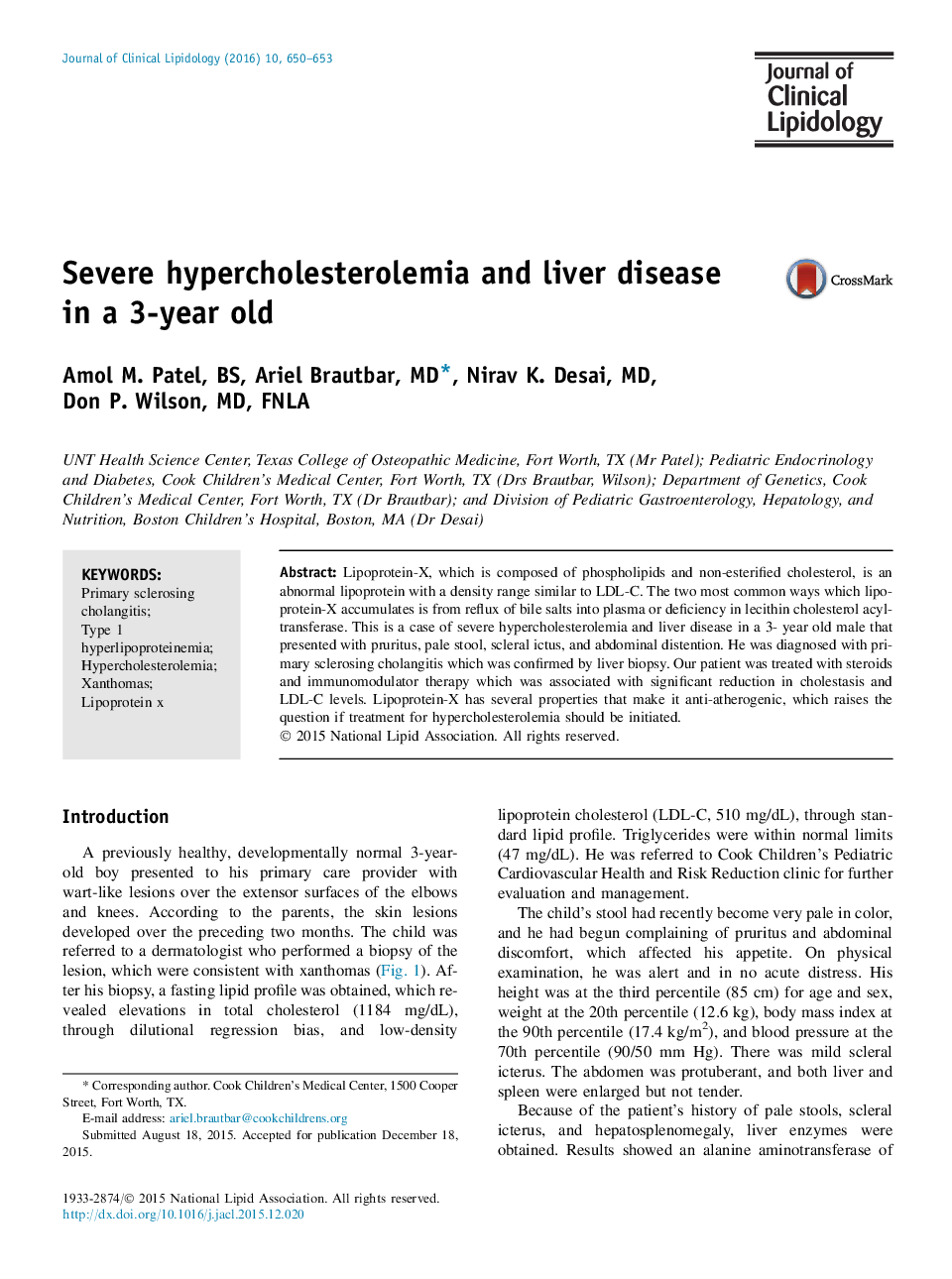| Article ID | Journal | Published Year | Pages | File Type |
|---|---|---|---|---|
| 5985329 | Journal of Clinical Lipidology | 2016 | 4 Pages |
â¢Primary sclerosing cholangitis presenting as severe hypercholesterolemia.â¢Lipoprotein X is not thought to be atherogenic and may exhibit anti-atherogenic properties.â¢The role of lipid-lowering therapy is questionable.â¢Low-density lipoprotein cholesterol reduction achieved after immunomodulation therapy.
Lipoprotein-X, which is composed of phospholipids and non-esterified cholesterol, is an abnormal lipoprotein with a density range similar to LDL-C. The two most common ways which lipoprotein-X accumulates is from reflux of bile salts into plasma or deficiency in lecithin cholesterol acyltransferase. This is a case of severe hypercholesterolemia and liver disease in a 3- year old male that presented with pruritus, pale stool, scleral ictus, and abdominal distention. He was diagnosed with primary sclerosing cholangitis which was confirmed by liver biopsy. Our patient was treated with steroids and immunomodulator therapy which was associated with significant reduction in cholestasis and LDL-C levels. Lipoprotein-X has several properties that make it anti-atherogenic, which raises the question if treatment for hypercholesterolemia should be initiated.
